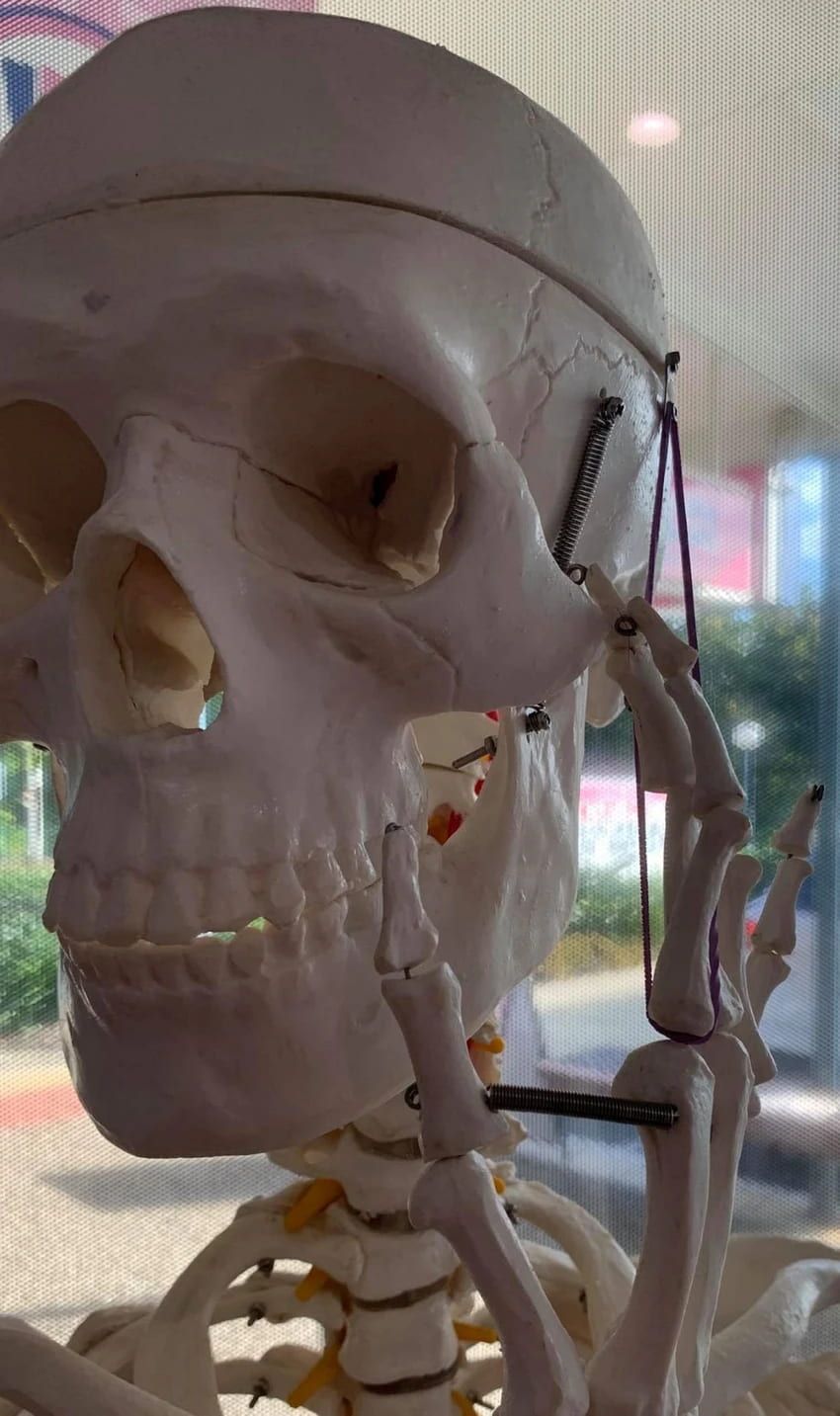Grin and bear it: Jaw and Neck Pain
Updated: May 27, 2020
Jaw Pain and clicking are both signs and symptoms of issues within the joint connecting the jaw to the skull, called the Temporomandibular Joint (TMJ). They usually accompany other signs like uneven motion, chewing more on one side than the other and wear of the teeth or joint of the affected side. It may be something as well that may fly under the radar due to its usual slow buildup of problems. However, it is usually not a problem that occurs in isolation, with studies by Aloosi et al in 2016 showing that there is a fairly substantial link between neck pain and jaw pain and clicking. This can be down to a few factors which we will go through in this blog, and how you may be able to understand and alleviate any issues which you are experiencing.
Firstly, an understanding of the anatomy of the area is needed to get why there are links between neck pain and jaw issues. Firstly, most of the neck muscles which control neck and shoulder motions connect to a point of the skull called the mastoid process, located at the knobbly part behind the jaw and under the ear. When under stress, the body tenses these neck and shoulder muscles reflexively. The body also tenses the jaw reflexively under stress, and this tightness can over time cause pain and uneven motion of the jaw. This is identified as the first link, and is more of a stress induced link between the two areas. However, the second link is a bit more anatomical and structural in nature.
In the neck, there is a bone called the hyoid which serves as an anchor for a lot of the muscles in the front of the neck to attach to. This bone is connected to the upper part of the spine, and as such moves as the spine moves. If the spine is restricted in motion, it means that the tension in muscles attaching to the hyoid will be different from the left to right side. Since some of these muscles connect directly to the jaw to assist in opening and closing, if one side is tight, it pulls the jaw towards that side more. This causes an unevenness in the wear on that side of the jaw and can start to degenerate the affected joint, which causes pain over time. This means that a restricted neck can directly influence how the jaw performs and cause pain and tightness through the muscles connecting it all.
The good news is that most jaw issues, if short term, are usually biomechanical in nature. This means that the motion and muscles surrounding it are not functioning properly. Chiropractic as a course of care focuses on restoring motion into the joints and muscles of the body, and as such can improve the function of neck and jaw joints and muscles to improve conditions related to it. If you have tightness or pain in the neck and jaw regions, feel free to contact the team at Anderson Family Chiropractic to organise a consultation with our chiropractors to discuss any issues you may be having and to see if we can help
Aloosi, S., Mohammad, S., Qaradakhy, T., & O Hasa, S. (2016). Contribution of Cervical Spine in Temporomandibular Joint Disorders: A Cross-Sectional Study.










